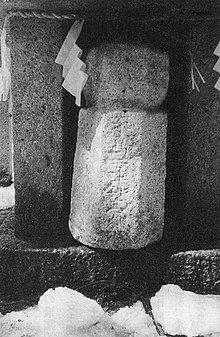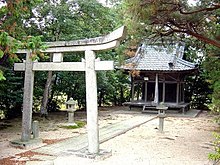|
Gwisil Jipsa
Gwisil Jipsa (鬼室集斯, ? – 688), was the son of Gwisil Boksin (鬼室福信), a general of Baekje, one of the Three Kingdoms of Korea. The Gwisil clan was a collateral branch of the royal family, the Buyeo clan (扶餘氏).[1][2] He settled in Japan after the fall of the kingdom and death of his father where he became a member of the Japanese court where they called him Kishitsu Shushi after the Japanese reading of his name. Fall of Baekje Before Jipsa moved to Japan he was a Dalsol (達率, 2nd court rank) in Baekje's 16 rank system. When Paekche fell in 660 his father tried to save the nation by raising an army and proclaiming Buyeo Pung (扶餘豊), the son of the last recognized king of Baekje, King Uija, as the next king under the name King Pungjang (豊璋王). In 663, the Silla–Tang alliance counterattacked, and besieged the restoration movement at the fortress of Juryu Castle (주류성/周留城). Boksin was captured and then executed; his head was salted and pickled.[3][4] JapanThree years after the death of his father, the Baekje army was destroyed at the Battle of Baekgang and Gwisil Jipsa came and settled in Japan with his family during the second year of Emperor Tenji's reign (663). In February, 665, Naka no Ōe no Miko (Emperor Tenji) granted the rank of "Lower Shokin" (小錦下) upon Jipsa and he became Chief of the Department of Education. He settled in Gamō-gun, Omi Province.[5]
Kishitsu Shrine Gwisil Jipsa died on November 8 or December 5 of 688. His tomb is located at Kishitsu Shrine (Kishitsu-jinja, 鬼室神社) in Ono, Hino-chō, Gamō-gun, Shiga-ken, Japan. His father, Boksin, is enshrined in the village of Eunsan-ri, Buyeo County, South Chungcheong Province, South Korea. Because of this Hino and Eunsan decided to become sister cities in 1990. LegacyJipsa became ancestor of several Japanese clans including the Kikuchi clan, a powerful family of Higo Province, Kyushu.[7] He also brought a lot of knowledge from the continent that helped the Japanese greatly. Jipsa had an older brother named Gwisil Jipsin (鬼室集信, Kishitsu Shushin) who is mentioned only once in the Japanese Nihon Shoki. NotesReferences
See also |
||||||||||